Become a member today to receive early access to stories like this one, plus plenty of other benefits and behind-the-scenes experiences with the Library.
Let’s delve into a little sketchbook.
A rather unassuming one by the cover, but fascinating, nonetheless.

Within the simple and worn covers, are pages filled with light pencil sketches, details of the newsworthy happenings of Melbourne in the late 19th century.
The sketchbook belonged to George Rossi Ashton. An English artist who came to Melbourne, stayed for about 15 years, then returned to England. An adventurous chapter of his life no doubt. Ashton’s artistic career was not interrupted during his sojourn, he worked for several Australian illustrated newspapers and belonged to various artist associations.
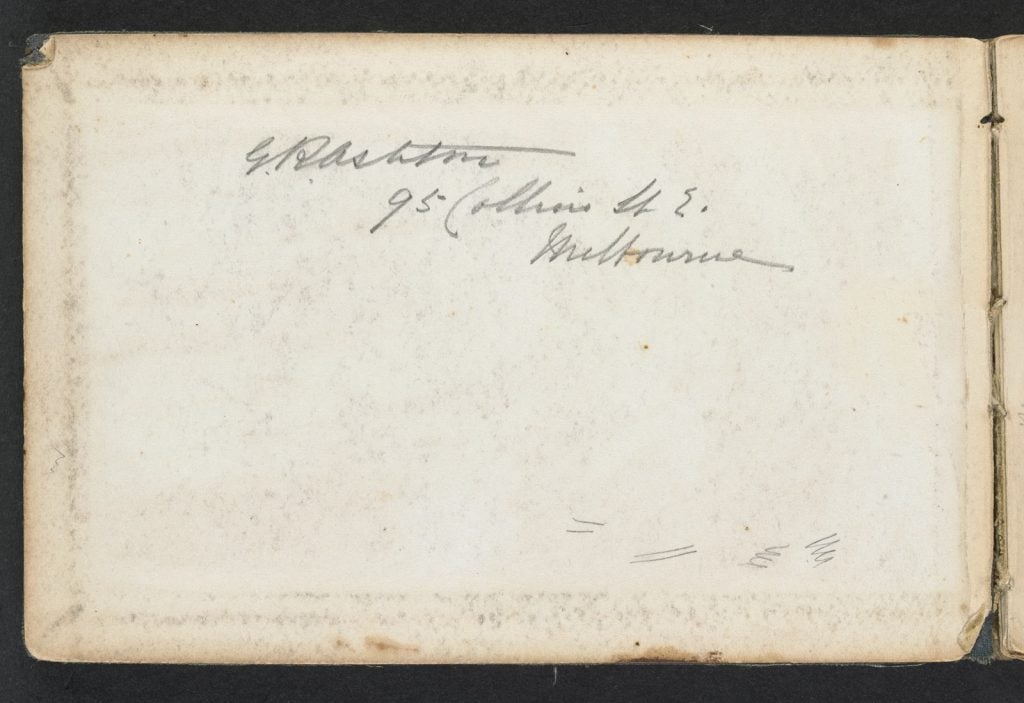
Scrawled inside the sketchbook cover, just in case it was lost, is his name and address: “G.R. Ashton 95 Collins St E. Melbourne”. The street numbers have since changed, but this Collins Street address was near the Independent Church (now St Michael’s Uniting Church), between Russell Street and Alfred Place. The 1885 Sands & McDougall’s Melbourne and suburban directory confirms Ashton at this address, together with some other artistic types and a Miss Bell.
Collins Street was the hub of fashionable society. Nearby to Ashton’s studio, people would promenade in their finest, ‘doing the block’ to show off (but pretending not to be, of course).
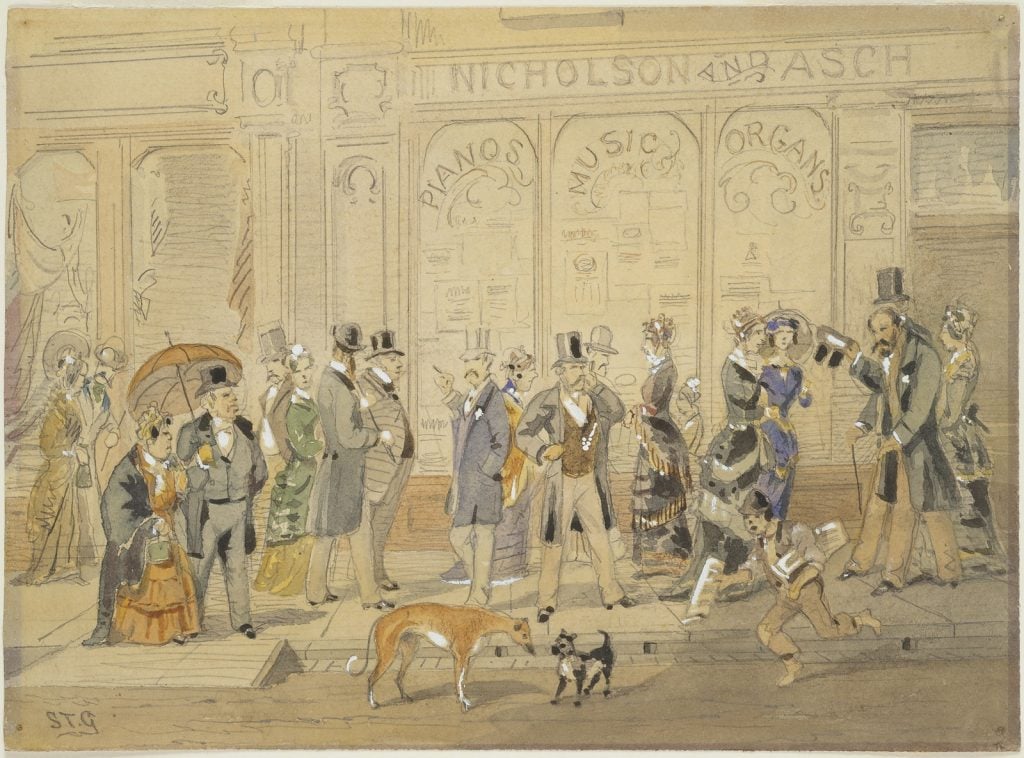
Ashton’s sketchbook mainly reflects Melbourne activities, but does includes some jaunts outside the city – to the coastal areas of Sorrento and Williamstown, and further afield to Sydney. Sometimes the drawings are captioned and dated, a very helpful practice. So, from what we can tell, he was using this sketchbook through the late 1880s.
This little sketchbook of Ashton’s would likely have fitted in his pocket – imagine it just a little larger than a postcard. The sketches within are fast and light and record his impressions of the day’s news in preparation for potential inclusion in the illustrated papers. I’d love to know more about how Ashton went about his artistic work for his job at the Illustrated Australian News in Melbourne. Was he tasked with particular pieces? Or did he sketch whatever took his fancy in a more serendipitous method?
Let’s explore four of the Melbourne happenings that Ashton sketched out and were ultimately engraved for the monthly illustrated newspaper.
The Mikado arrives at the Theatre Royal, Melbourne, 20 February 1886
The famous comic opera had only opened in London for the first time in March 1885, less than a year before its highly anticipated arrival in Melbourne. Ashton devotes five pages in his sketchbook to the performance, dated 20/2/86, pages 7, 8, 9, 49, and 50. These are some of the most detailed drawings in the sketchbook, and Ashton has diligently recorded the costumes and movements of the performance.
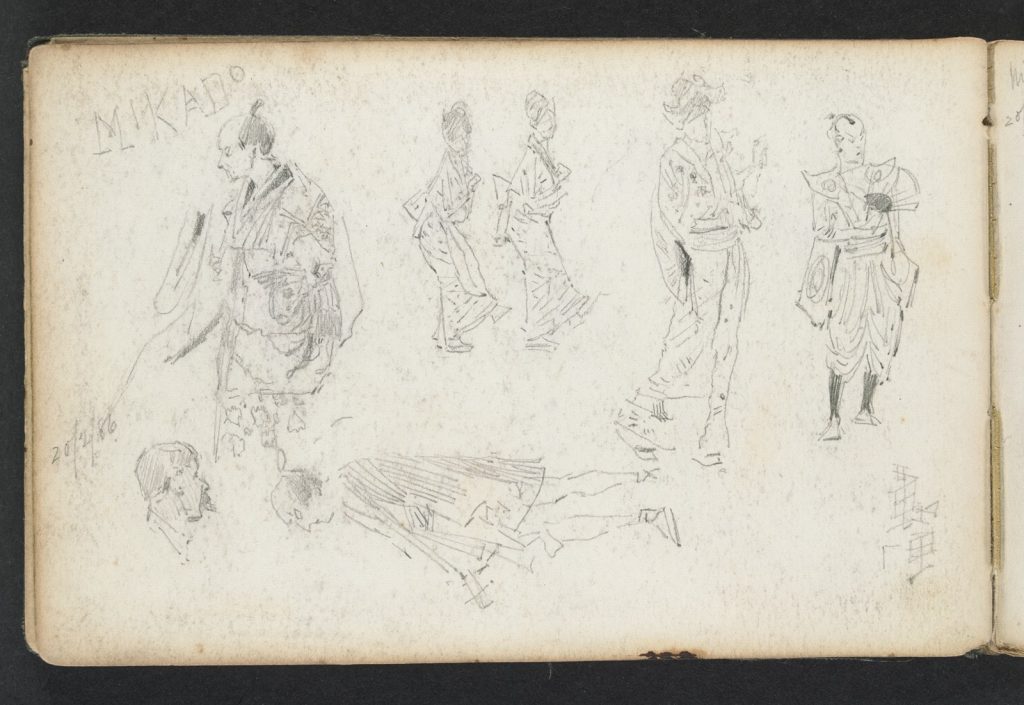
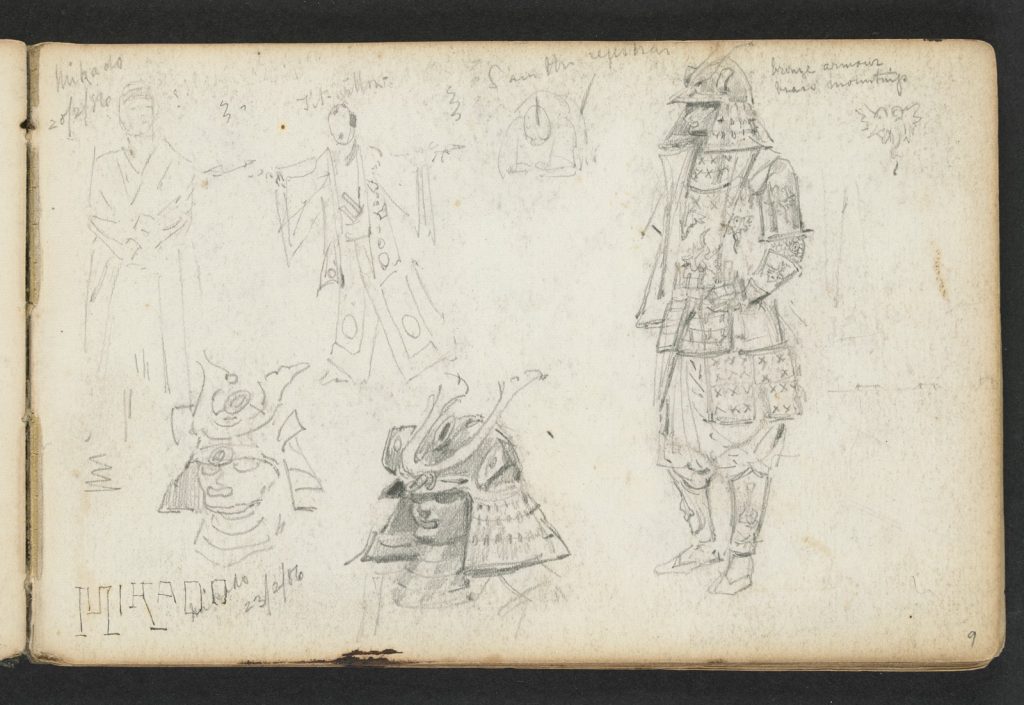
Perhaps Ashton attended the Theatre Royal with Blanche Coppin… they’d married a couple years earlier and she was the daughter of George Coppin, who just so happened to own that very theatre. Small town, Melbourne!
A couple of weeks later, Ashton’s sketches appear finalised and converted to a wood engraving by F A Sleap, for The Illustrated Australian news, March 3, 1886.
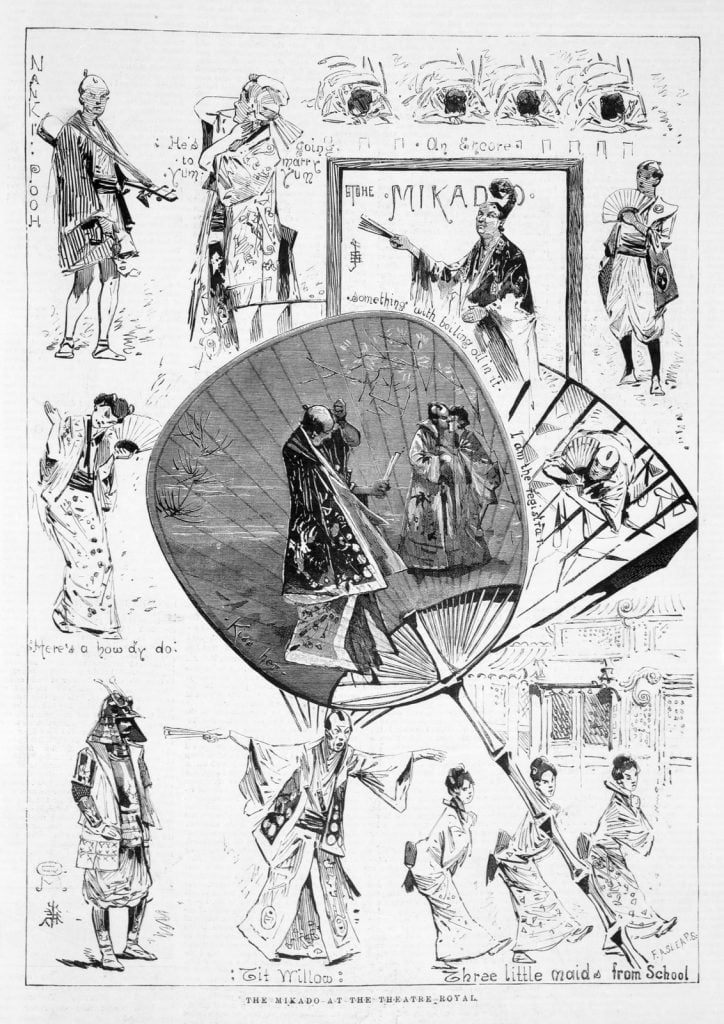
We can easily recognise Ashton’s sketches within the final composite artwork. Doing justice to the critic’s review of an opera that was “…presented in so artistic a manner as to form a decided era in operatic management in Australia”. (‘The Mikado at the Theatre Royal‘, Illustrated Australian News, 3 March 1886, p. 42)
Ships collide in accident at Sandridge Pier, 2 May 1886
Sandridge (now Port Melbourne), was shocked on 2 May 1886, by the collision between the steamer Khahdalla and the barque Prince Oscar, at the Sandridge Pier. The order for “Full speed astern,” was mistook for “Full steam ahead”. Thankfully no deaths occurred, but some of the crew were injured and the vessels damaged. (‘Collision between the Khandalla and Prince Oscar.’, Illustrated Australian News, 26 May 1886, p. 90)


The difference between Ashton’s sketch and the final published engraving is stark, but the original is still clearly recognisable in the composition of the work. Compare the sketch on the right, to see the progression, and how much detail has been rendered in the wood block to reproduce the frightening maritime incident. The engraving was published in the Illustrated Australian News, May 26, 1886, page 90.
![The collision between the Khandala [or Khandalla] and the Prince Oscar,
George Rossi Ashton and Samuel Calvert. IAN26/05/86/92](https://blogs.slv.vic.gov.au/wp-content/uploads/2021/06/ashton_ships-engraving-1024x742.jpg)
George Rossi Ashton and Samuel Calvert. IAN26/05/86/92
Making Passover cakes at a new Melbourne bakery, 27 January 1887
Preparations for the Jewish celebration of Passover are recorded in Ashton’s sketches of a new bakery operating in Melbourne. In these sketches, Ashton took care to record the specific inner workings of the bakery. The recipe measurements, facts and figures appear along side his sketches, dated 27 January 1887. These details are then fleshed out in the full story published with the engraving in the Illustrated Australian News, 5 March 1887.


It’s still amazing now to imagine how this bakery produced “800 lb. of bread per day” for Victoria and “all the neighboring colonies”, when the process in the illustration appears very manual (‘Making Passover cakes’, Illustrated Australian News, 5 March 1887, p. 42,). My favourite step is the kneading, where we see the baker using their whole body weight to leverage against the dough.
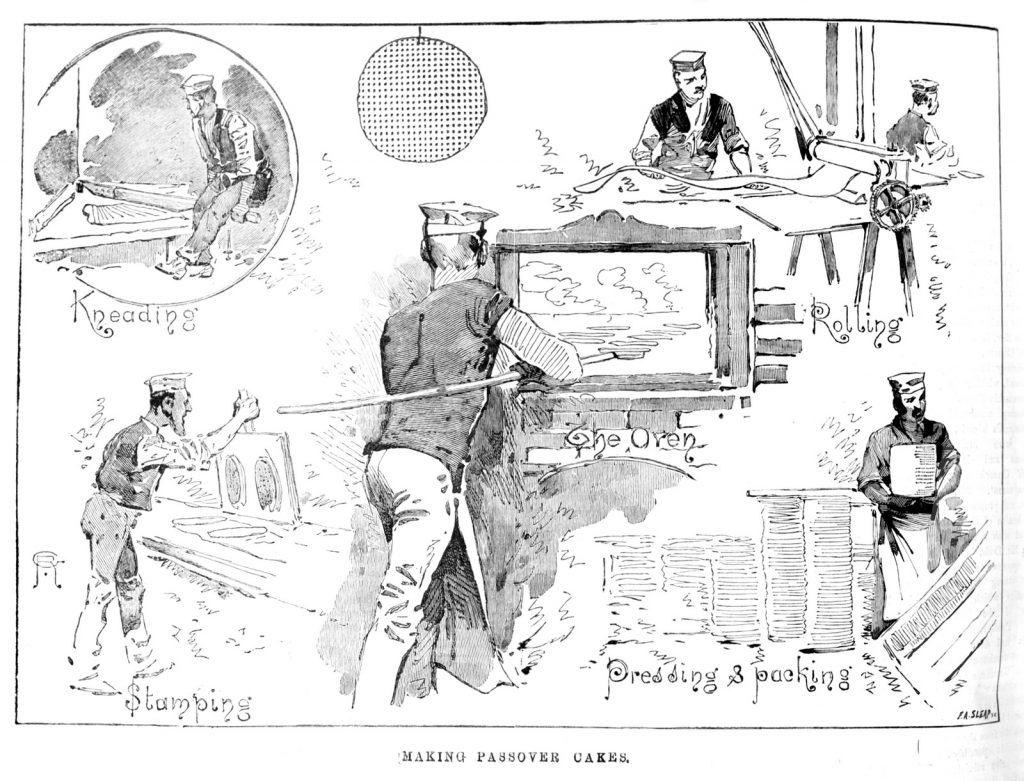
We can see the similarity in engraving style here to the Mikado sketches, where Sleap has retained the lightness and simplicity of Ashton’s sketches in the final engraving.
A certificate in life saving from St John’s Ambulance, 23 July 1889
Thankfully, Ashton captioned and dated this sketch, as otherwise the entire context would be lost to time. It is the briefest of pencil sketches, a sparse interior, a bench, windows, a clock, and a note “chairs”.
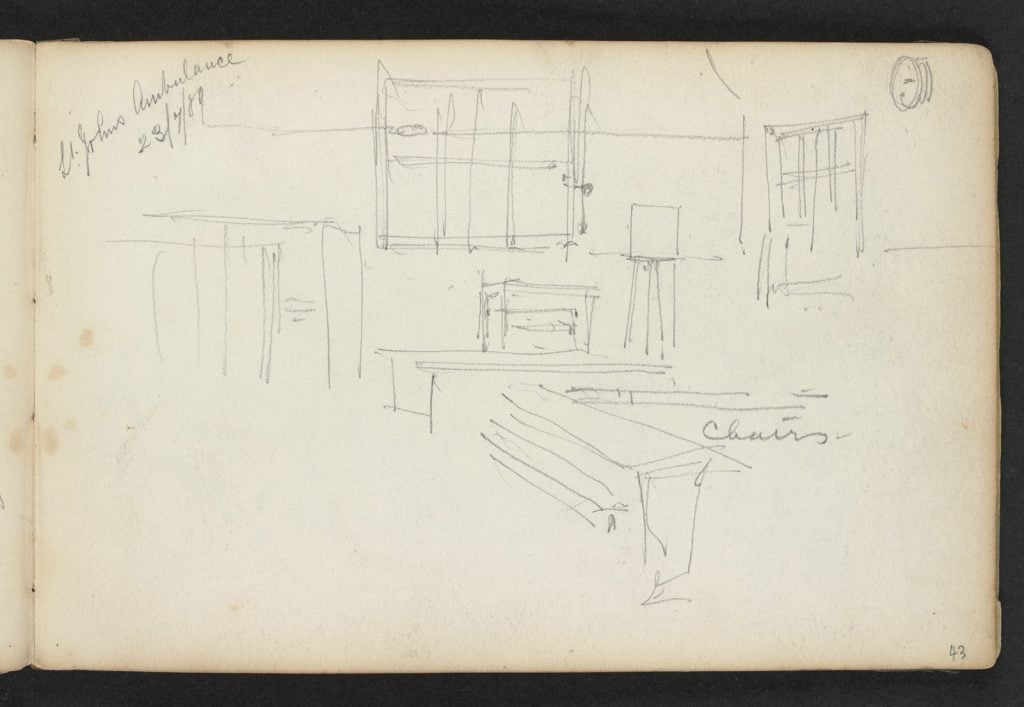
The caption gives us just enough to find the newspaper article. In the final engraving by Sleap, Ashton’s sketch is just recognisable as the foundation for the lower scene. That one word note, “chairs”, has in the final engraving been replaced by the rows of seated women, attending a lecture.

This artwork was featured as the front page of the Illustrated Australian News and Musical Times, 2 September 1889.
This paper sold for sixpence, and in it you could read all about the St John’s Ambulance lecture in Toorak, where the attendees learnt that “mistakes that cause or hasten death are the result of the want of a little simple instruction” (Our illustrations‘, Illustrated Australian News and Musical Times, 2 September 1889, p. 18.). They were thus trained in techniques of resuscitation, bandaging and remedying dislocations. After successfully completing a series of training and lectures, they earned a certificate from the society.
These drawings are a simple, yet evocative reflection of some of the happenings of Melbourne city life in the late 1880s. Ashton’s entire sketchbook has been digitised online for you to browse the pages. Perhaps you will match up more of his drawings with published engravings in the illustrated newspapers of the time.


Excellent piece—thanks!